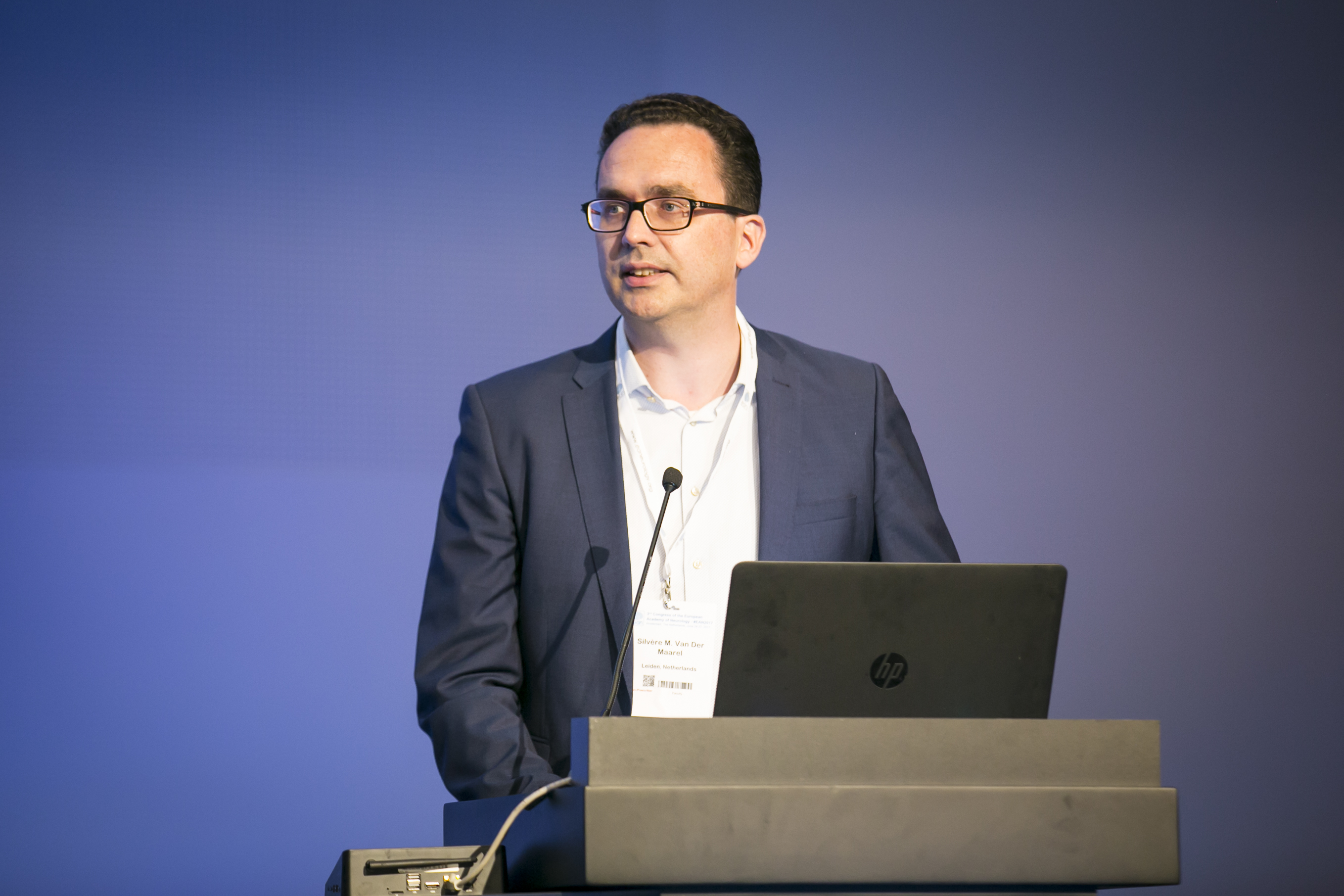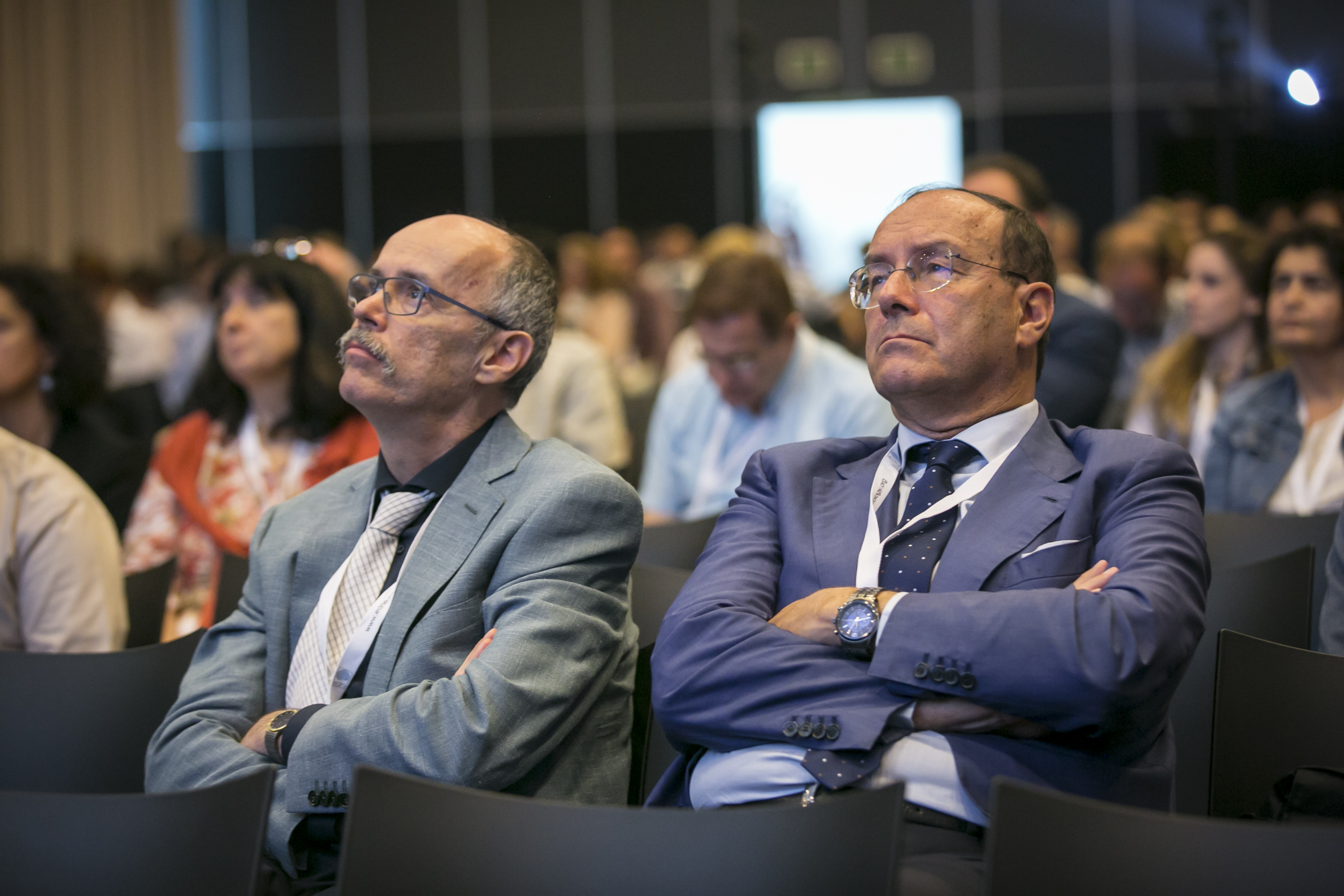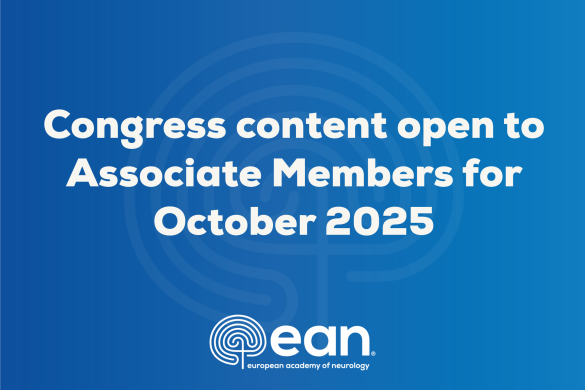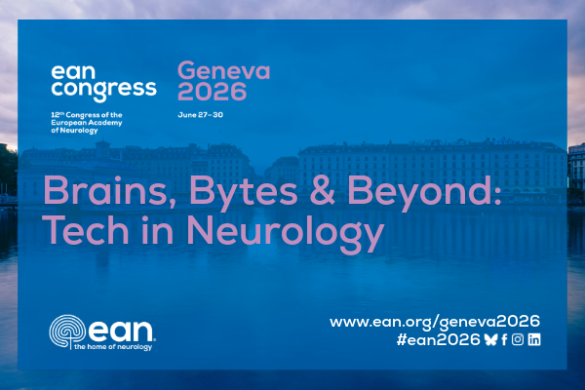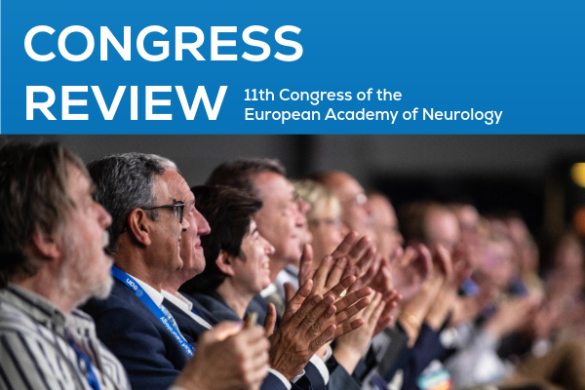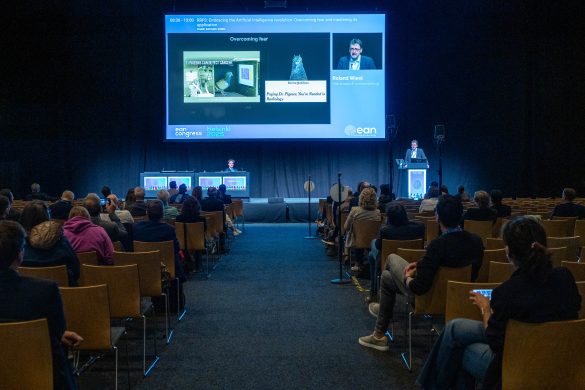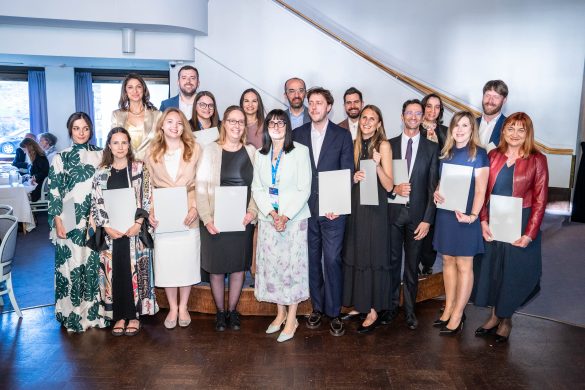Syposium 3: DNA repeat syndromes in neuromuscular disorders
Elicium 1, Saturday, June 24, 2017, 10:30-12:30
Chairperson:
Benedikt Schoser, Munich, Germany
Vincenzo Silani, Milano, Italy
Amyotrophic lateral sclerosis (ALS)
Vincenzo Silani, Milano, Italy
Myotonic dystrophies
Benedikt Schoser, Munich, Germany
Facioscapulohumeral muscular dystrophy (FSHD)
Silvere M. van der Maarel, Leiden, The Netherlands
Oculopharyngeal muscular dystrophy (OPMD)
Capucine Trollet, Paris, France
The diverse range of disorders caused by a genetic repeat expansion were the subject of this symposium, focusing on insights into relationships between increasingly well characterised genetic abnormalities and clinical phenotypes. A group of world experts took us through their specific disease areas. First, Vincenzo Silani from Milan described the discovery of the C9orf72 repeat expansion in motor neuron disease/amyotrophic lateral sclerosis (MND/ALS) in 2011, the most prevalent gene to date in familial MND, and also found in a significant proportion of apparently sporadic cases. The discovery of this genetic clue led to intensive research efforts to decipher pathogenic mechanisms, which remain a great unsolved mystery in MND and a major barrier to developing better treatments. In C9orf72 patients, it appears that toxic gain of function, either of the repeat RNA sequence or resulting dipeptides, which were recently identified in cerebrospinal fluid, are implicated. Many complexities remain to be unraveled, such as the diversity of clinical phenotypes reported with the mutation (in addition to MND/ALS, Parkinsonism, corticobasal degeneration and Huntington’s have been described), discordance in monozygotic twins, penetrance and somatic mosaicism, but there are grounds for optimism with forthcoming antisense oligonucleotide therapy trials planned.
Benedikt Schoser from Munich then took us through advances in myotonic dystrophy, highlighting phenotypic overlap between phenotypes of DM1 and DM2, caused by DMPK and ZNF9 mutations, respectively. Again, toxic gain of function appears important in defining the clinical phenotype, which includes cardiac muscle involvement, resulting in reduced life expectancy. Larger repeat expansions are associated with a higher risk of cardiac death. Management aspects were highlighted including the importance of symptomatic treatment and a recent trial of exercise training and cognitive behavioural therapy for the common and disabling symptom of fatigue described; results will be reported soon.
Silvere van der Maarel from Leiden next took us through the genetics of facioscapulohumeral muscular dystrophy (FSHD), illustrating the converse problem to genetic repeat expansions, a repeat contraction disorder. Recent work has elucidated reasons for the clinical variability which exists in FSHD. Dr van der Maarel explained how interactions between the size of the genetic repeat contraction, methylation status, and influence of other genes such as SMCHD1 on DUX4 protein expression, which is toxic to muscle, may influence the phenotype. Understanding these pathways may lead to new therapeutic avenues.
Capucine Trollet from Paris described recent work in oculopharyngeal muscular dystrophy (OPMD). A mutation in the PABPN1 gene leads to a polyalanine repeat and damaging intranuclear inclusions that, for reasons still unknown, pick out the cricopharyngeal and extraocular muscles. The Paris group have trialled surgical approaches for dysphagia, including transplantation of muscle from clinically non-affected areas to cricopharyngeal muscles in a phase 1 trial with some encouraging early results and the trial is being extended. In addition, viral vector delivered RNA interference techniques are being applied in mouse models, with 98% normalisation of the transcriptome reported.
Overall, this symposium highlighted commonalities between the genetic repeat disorders, in particular that toxic gain of function is frequently implicated, and that these disorders may represent a promising target for gene silencing approaches in the future. Whilst repeat disorders also present particular technical challenges that remain to be overcome, clinical trials are emerging from advances in understanding pathophysiology and this is clearly an exciting and rapidly evolving area of neurology.
By Tom Jenkins
